Craig Lambert in Harvard Magazine:
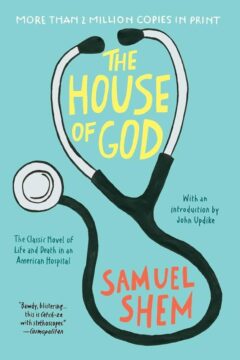 In 1968, Stephen Bergman ’66, M.D. ’73, was driving through the desert in Morocco on a dead-straight road. At one point, he noticed the sun going down directly in front of him while the moon was rising behind. “I had never seen anything like that on Earth,” he recalls.
In 1968, Stephen Bergman ’66, M.D. ’73, was driving through the desert in Morocco on a dead-straight road. At one point, he noticed the sun going down directly in front of him while the moon was rising behind. “I had never seen anything like that on Earth,” he recalls.
The sunset/moonrise moment seemed an epiphany, “a sign,” he says, that the symmetries and mysteries of the world, which art echoes, were, for him, life at its richest. Somehow it seemed to validate his innate wish to be a writer, although at that time, Bergman’s actual writing “was too precious to show anyone,” he says. Still, “an adventure had shown itself to me. I loved feeling free of all these damn schools I had spent my life in.”
Even so, Bergman scarcely imagined himself becoming one of the world’s most widely read authors. A decade hence, his first novel, The House of God, on his internship at a Boston hospital, appeared under the pen name “Samuel Shem.” Over time it built a vast global readership that continues even today, with more than 2 million copies sold and translations available in all the world’s major languages.
More here.

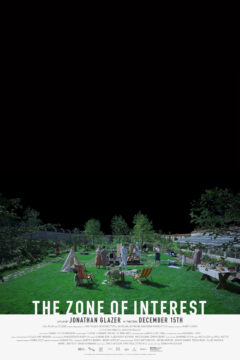 Glazer’s decision to only use hidden cameras, without any artificial lighting, creates formal limitations and challenges. But the images retain an intense tactility: patterns on fabrics, the pull of harshly parted and pinned hair, fuzz on a bee that circles a blossom, the softness of a dog’s muzzle, the glint of light reflected from an extracted human tooth. Close-ups punctuate longer observational takes, asserting the specificity of the surfaces that define this moment. The measured pacing of The Zone of Interest strikes me as distinct from the slow cinema tradition, where duration typically serves as a thematic focus. Instead, the length of the shots serves the function of extending the overarching tension. Glazer’s long takes are often paired with an uncomfortable intensity in the soundscape (perhaps the sonic analogue to an uncomfortable close-up), making these moments less an invitation to haptic reverie than an overwhelming of the senses. Suspense, tension, and a nauseating realization about what remains unseen dominate the affect, increased by the long takes that never fully reveal or resolve. The impact feels similar to the way the mind retains a vividly detailed image of a mundane moment preceding a traumatic event that itself can’t be fully recalled.
Glazer’s decision to only use hidden cameras, without any artificial lighting, creates formal limitations and challenges. But the images retain an intense tactility: patterns on fabrics, the pull of harshly parted and pinned hair, fuzz on a bee that circles a blossom, the softness of a dog’s muzzle, the glint of light reflected from an extracted human tooth. Close-ups punctuate longer observational takes, asserting the specificity of the surfaces that define this moment. The measured pacing of The Zone of Interest strikes me as distinct from the slow cinema tradition, where duration typically serves as a thematic focus. Instead, the length of the shots serves the function of extending the overarching tension. Glazer’s long takes are often paired with an uncomfortable intensity in the soundscape (perhaps the sonic analogue to an uncomfortable close-up), making these moments less an invitation to haptic reverie than an overwhelming of the senses. Suspense, tension, and a nauseating realization about what remains unseen dominate the affect, increased by the long takes that never fully reveal or resolve. The impact feels similar to the way the mind retains a vividly detailed image of a mundane moment preceding a traumatic event that itself can’t be fully recalled.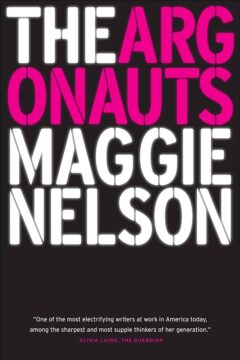 We have a sense, I think, of the false border sequestering art from theory. And so to remark on Maggie Nelson’s facility in mating the two is to say the least about how she does so—which is with a hurtling gusto that nonetheless invites us to pause and think. For this, her books are beloved by audiences with varying attachments to the categories that are often, imperfectly, applied to what they are reading: “memoir,” “art criticism,” “poetry,” “queer theory,” “feminism.” This is one way of saying that describing Nelson’s writing can be harder than consuming it, as one of its defining features involves unfurling the shorthand that governs—literally and figuratively—so much of our lives, including the terms we use to identify ourselves.
We have a sense, I think, of the false border sequestering art from theory. And so to remark on Maggie Nelson’s facility in mating the two is to say the least about how she does so—which is with a hurtling gusto that nonetheless invites us to pause and think. For this, her books are beloved by audiences with varying attachments to the categories that are often, imperfectly, applied to what they are reading: “memoir,” “art criticism,” “poetry,” “queer theory,” “feminism.” This is one way of saying that describing Nelson’s writing can be harder than consuming it, as one of its defining features involves unfurling the shorthand that governs—literally and figuratively—so much of our lives, including the terms we use to identify ourselves. In 1968
In 1968 Daniel Kahneman died last week at the age of 90. His legacy is immense. He was, as he put it, the “grandfather” of behavioural economics — think economics but with a realistic model of what a human is — a role which won him a Nobel Prize. But Kahneman’s legacy is bigger than that. Kahneman and Tversky changed how we think about how people think, and if you change that, you change everything. You can see their influence all across the social sciences and much of the humanities.
Daniel Kahneman died last week at the age of 90. His legacy is immense. He was, as he put it, the “grandfather” of behavioural economics — think economics but with a realistic model of what a human is — a role which won him a Nobel Prize. But Kahneman’s legacy is bigger than that. Kahneman and Tversky changed how we think about how people think, and if you change that, you change everything. You can see their influence all across the social sciences and much of the humanities. The detective in a typical British crime procedural would say that
The detective in a typical British crime procedural would say that 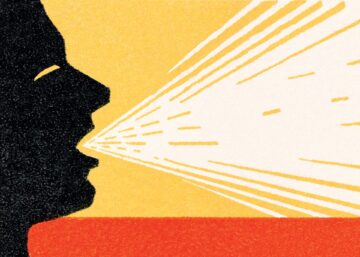 An estimated
An estimated  H
H E
E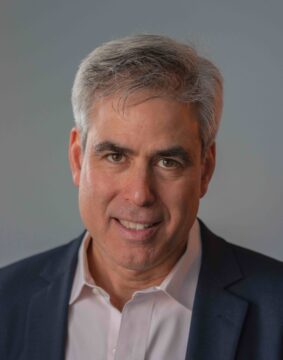 Odgers recently stated the skeptics’ case in an essay in Nature titled
Odgers recently stated the skeptics’ case in an essay in Nature titled 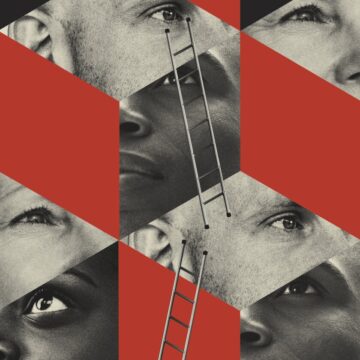 Equity has become a familiar term on American college campuses in recent years, as well as a flashpoint in the nation’s culture wars.
Equity has become a familiar term on American college campuses in recent years, as well as a flashpoint in the nation’s culture wars. 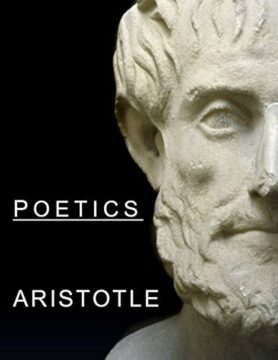 If the Poetics, Aristotle’s treatise on the subject of tragedy, is rarely studied today, it is largely because the French Neoclassicists of the seventeenth century turned Aristotle’s descriptions of Greek tragedy into prescriptions. Finessed by Corneille and Racine, ignored by Molière, challenged by the Romantics, and rejected by the Modernists, the Poetics was all but forgotten by 1953. But each in his own way, Beckett and Clarke heeded the deeper insights it contains.
If the Poetics, Aristotle’s treatise on the subject of tragedy, is rarely studied today, it is largely because the French Neoclassicists of the seventeenth century turned Aristotle’s descriptions of Greek tragedy into prescriptions. Finessed by Corneille and Racine, ignored by Molière, challenged by the Romantics, and rejected by the Modernists, the Poetics was all but forgotten by 1953. But each in his own way, Beckett and Clarke heeded the deeper insights it contains. Earth was dying. We had five years left to live. Ziggy Stardust, the bisexual alien rock star, was sent from another planet to grey, binary 1970s Britain to give us a message of hope. I’m not sure about the hope part of the message, but he really turned us on.
Earth was dying. We had five years left to live. Ziggy Stardust, the bisexual alien rock star, was sent from another planet to grey, binary 1970s Britain to give us a message of hope. I’m not sure about the hope part of the message, but he really turned us on.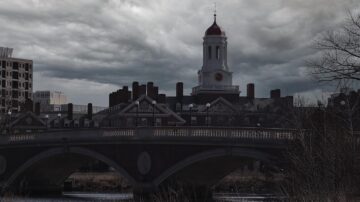 IN DECEMBER
IN DECEMBER In 2010, Theresa Chaklos was diagnosed with chronic lymphocytic leukaemia — the first in a series of ailments that she has had to deal with since. She’d always been an independent person, living alone and supporting herself as a family-law facilitator in the Washington DC court system. But after illness hit, her independence turned into
In 2010, Theresa Chaklos was diagnosed with chronic lymphocytic leukaemia — the first in a series of ailments that she has had to deal with since. She’d always been an independent person, living alone and supporting herself as a family-law facilitator in the Washington DC court system. But after illness hit, her independence turned into